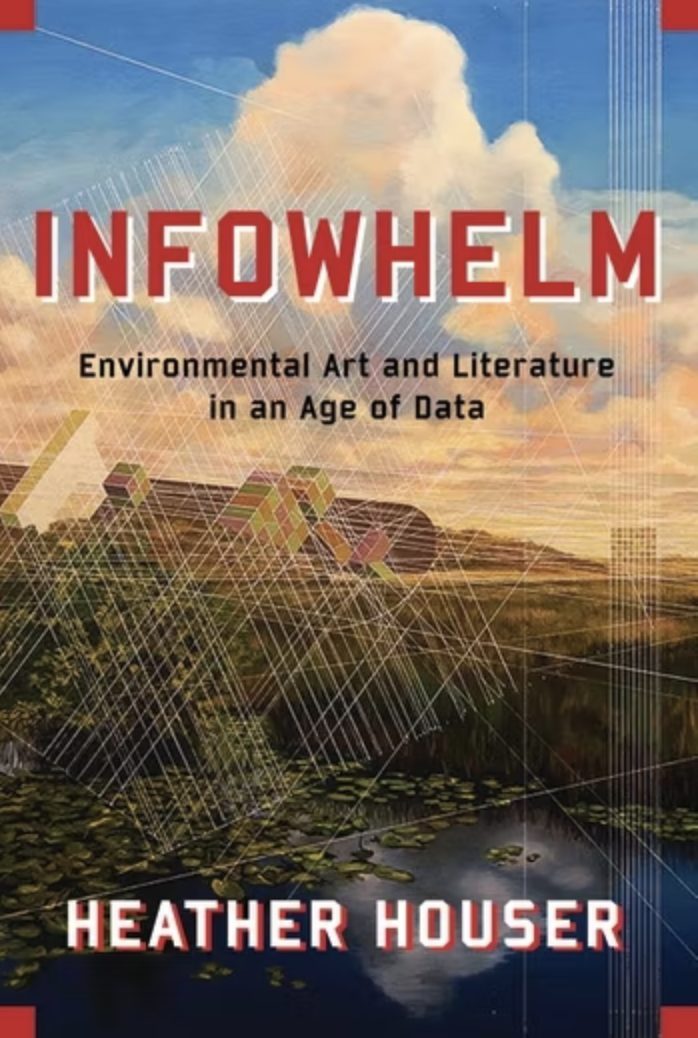By Isabel Fernald
University of Texas at Austin American and English literature professor Heather Houser, an environment scholar and author, spoke at a recent UCSB Interdisciplinary Humanities Center webinar.
Climate change remains one of our era's most pressing issues, yet the sheer volume of information, data, and statistics available on the topic can be paralyzing. Environmental scholar Heather Houser recently argued that arts and literature can aid with the dizzying array of overwhelming data, which experts term Climate Infowhelm.
Houser is an author and professor of English at the University of Texas at Austin, who presented her work on environmental representation in American literature to students at UC Santa Barbara in a recent Zoom webinar sponsored by the Interdisciplinary Humanities Center’s Too Much Information series.
“Infowhelm as a concept is meant to capture that it isn't simply about too much information, TMI, or about information overload—though that is certainly a central component,” she said. “The concept of Infowhelm, for me, includes a cocktail of emotions that might include confusion, agitation, or despair.”
Literature scholar Heather Houser says art and literature are key to helping the public engage with urgent environmental issues.
As the climate crisis has grown as one of this era's most significant challenges, tools for understanding it have remained overwhelmingly data-centric, Houser said. The daunting amount of data, numbers, and information we have access to now, can impede science’s ability to inform the general public and make the climate challenge resonate. For most, the topic can seem abstract and intangible.
Houser's most recent publication, Infowhelm: Environmental Art and Literature in an Age of Data, argues that climate change is a deeply entangled phenomenon involving complex interactions between physical, social, and cultural systems. In order to understand and address the issue, Houser suggests looking through a new lens. Specifically, she asserts that art and literature can help us engage with environmental issues emotionally and meaningfully.
“The arts are going beyond communicating stories about crises. They instead are overhauling perception, feeling, and thought, which really is the crucial foundation for environmental positions,” Houser said.
Houser cited a wide range of artworks and literary works highlighting climate visualizations, climate fiction, environmental documentaries, and eco-art, each of which spurs new narratives and new relationships with the environment.
Heather Houser’s book Eco Sickness in Contemporary U.S. Fiction: Environment and Affect (2014).
Author Amitav Ghosh, for example, takes up the role of analyst and storyteller to explore climate change in The Great Derangement. The book conveys the inadequacy of modern society to adequately address the urgent and existential threat of global warming.
In “Dear Climate,” an ongoing creative-research project created by artist-researchers Una Chaudri, Fritz Ertl, Olive Kellhammer and Marina Zurkow, aesthetic posters, performances, and multimedia installations inform the public. Their creative works located around the world aim to inspire engagement and action on environmental issues.
Houser pushes for integrating new ways of knowing, noting that unconventional approaches to connecting with the natural world can be a catalyst for environmental action.
“We want to create buzz in the sense of making climate action unignorable for businesses and government leaders. We don't want that buzz to become the hum of a refrigerator, or simply the signal of climate wokeness,” Houser said.
Isabel Fernald is a third-year Communication major at UC Santa Barbara. She wrote this article for her Writing Program course, Digital Journalism.




